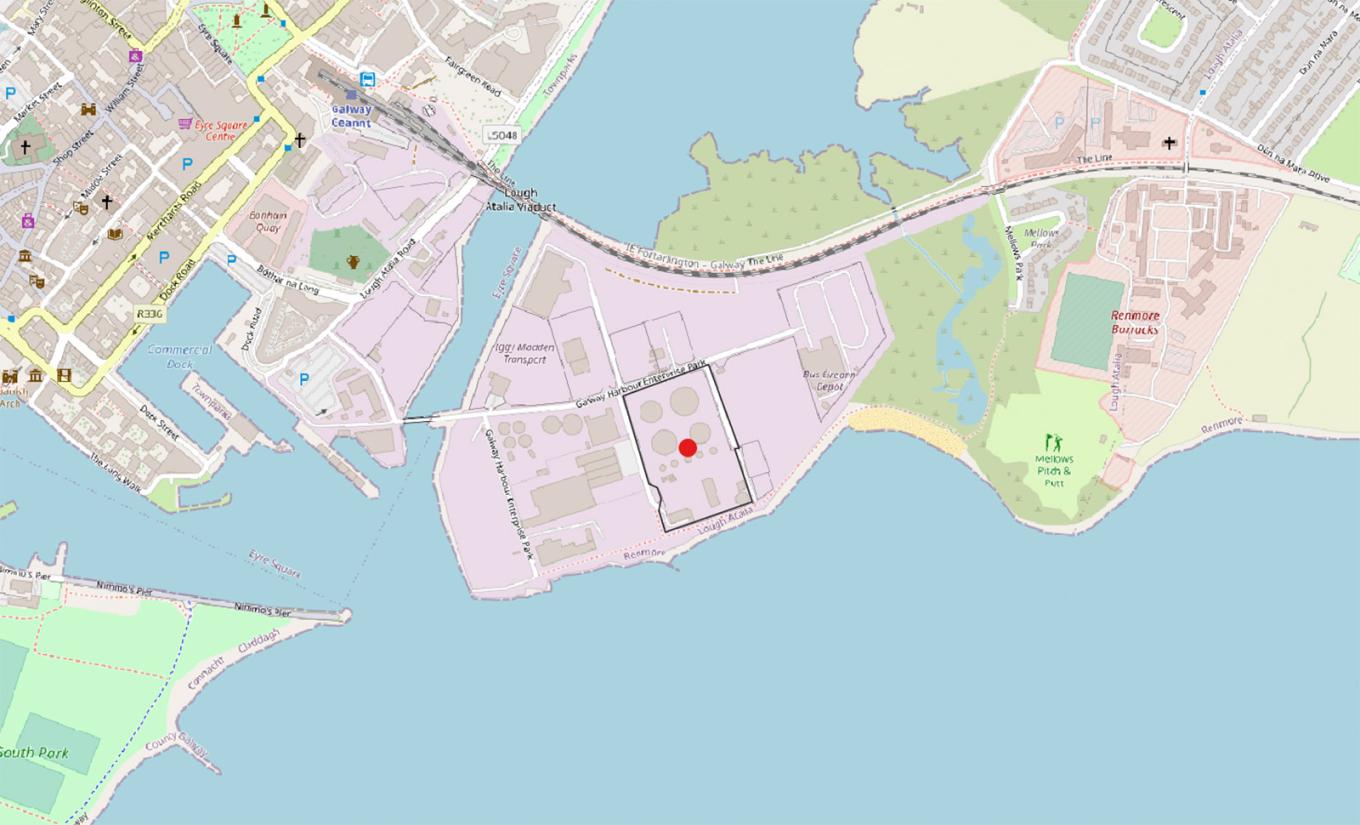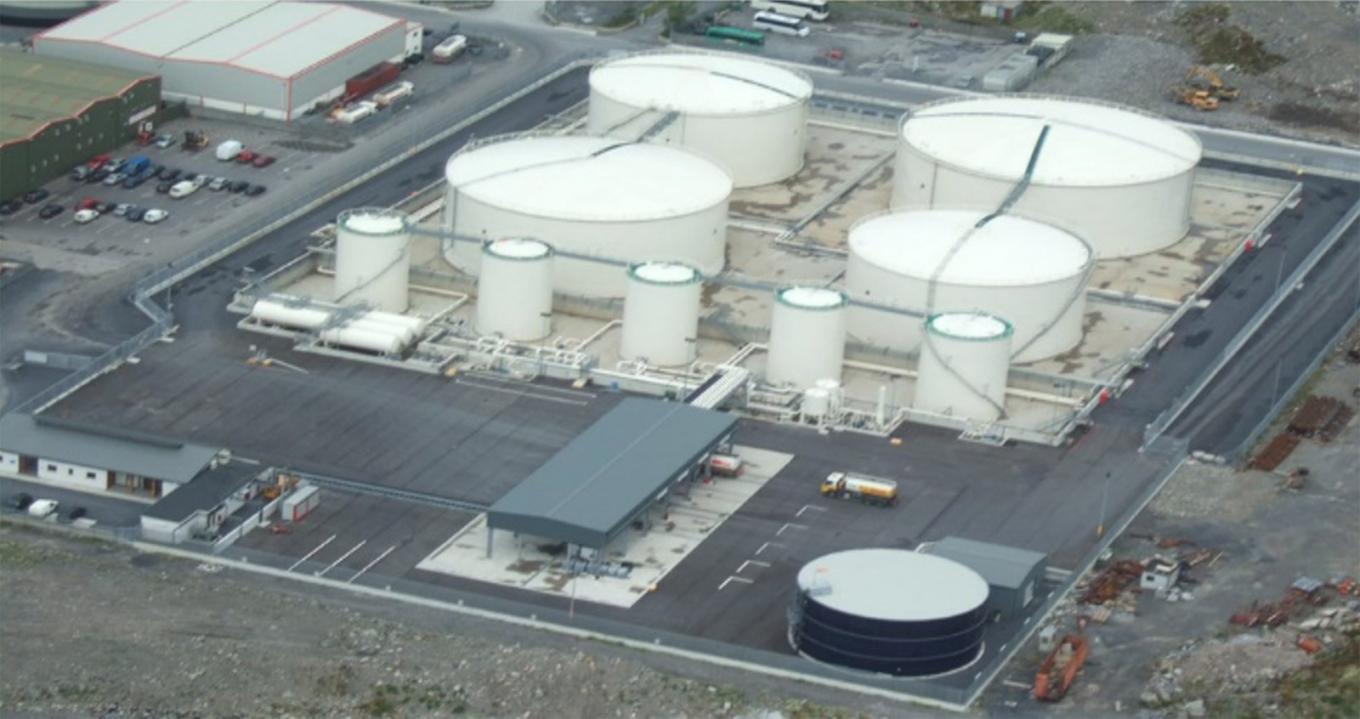Information to the Public - Circle K Galway
Unit 11, Galway Enterprise Park, Galway, H91 X030
t: +353 87 383 0824 | e: F_Galway_Terminal@circlekeurope.com | www.circlek.ie
Purpose of this Notice
This notice contains information on what you should do if an accident occurs at the Circle K Galway Terminal.
If you have received this notice, you live or work near the Circle K Galway Terminal. The Terminal is an Upper Tier COMAH establishment. Due to the nature and quantity of dangerous substances stored and handled at Terminal, there is the potential for major accidents to occur that could result in impacts outside the boundary of the Terminal.
This notice provides you with information on the accidents that could occur, and the actions to take if an accident occurs. If an accident occurs at the Terminal requiring you to take action, you will be advised by the sounding of the Terminal siren. If you are required to evacuate, you will be advised by the Port of Galway Harbour Master via text message alert system, or directly by the emergency services.
If you have questions or would like to contact us, please use the contact details above.
Circle K
The Circle K Galway Terminal is located in Galway Harbour Enterprise Park, New Docks, The Docks, Galway, H91 X030.
COMAH Legislation
The Circle K Galway Terminal is subject to the Chemicals Act (Control of Major Accident Hazards Involving Dangerous Substances) Regulations – the COMAH Regulations – due to the quantity of oil (petroleum) products that it stores. Under the COMAH Regulations, the Terminal qualifies as an Upper Tier establishment.
The COMAH Regulations lay down rules for the prevention of major accidents involving dangerous substances and seek to limit, to the greatest practicable extent, the consequences for human health and the environment of such accidents. The overall objective of the Regulations is to provide a high level of protection at COMAH establishments in a consistent and effective manner.
In accordance with Regulation 8(1), Circle K has submitted a Notification to the Health and Safety Authority. As an Upper Tier Establishment, Circle K is also required to submit a Safety Report to the HSA under Regulation 11(1), and to review and update the Safety Report every five years. The most recent Safety Report was submitted to the HSA in 2024.
Circle K Galway Terminal
The Circle K Galway Terminal imports, stores, loads, and distributes oil (petroleum) products and renewable products. The products are imported to the site either by ship from Galway Docks, or by road tanker, and are distributed from the site by road tanker.
The products are stored in aboveground storage tanks in bunds. They are transferred to the road loading area where they are loaded into road tankers for distribution. The import of product into the site can take place at any time of the day, and the distribution of product from the site via road tanker is carried out 24 hours per day, 7 days per week.
Dangerous Substances
The dangerous substances stored and handled at the Terminal with the potential to result in a major accident are:
- petrol (gasoline) (class I petroleum)
- kerosene (class II petroleum)
- diesel (class III petroleum)
- HVO (Hydrotreated Vegetable Oil)
Circle K also stores and uses smaller quantities of petroleum product additives and marker dyes (for kerosene and gas oil).
Each of the three substances – gasoline, kerosene, diesel – as well as the marker dyes is classified as flammable. Gasoline is classified as extremely flammable, and the other substances are classified as flammable. All of the substances are also classified as toxic to aquatic life with long lasting effects.
The potential major accident hazards associated with the flammable substances are fires and, in the case of gasoline, vapour cloud explosions. The potential impacts from such major accidents are thermal radiation for fires, and overpressures for vapour cloud explosions. Fires may also result in the generation of smoke which may be carried down wind.
Public Warning
The Terminal is equipped with a siren which will sound continuously in the event of a major accident. On hearing the siren, you should:
- Go indoors and close all doors and windows.
- Occupants of the Galway Harbour Enterprise Park should prepare to evacuate the Park. The Port of Galway Harbour Master will notify you by text message if an evacuation is required.
- If the Harbour Master instructs you that an evacuation of the Park is required, all personnel should evacuate to the designated assembly point beside the Harbour Hotel / the car-park to the south of the Cé Na Mara apartments.
- A designated manager / member of staff from each premises in Galway Harbour Enterprise Park should confirm that their premises has been evacuated, and advise the Emergency Services
- All occupants should wait for, and follow, any instructions from the Emergency Services.
- Do not return to your premises unless instructed that it is safe to do so by the Emergency Services.
- Do not obstruct or impede the Emergency Services.
The siren is tested at 11:00am on the first Wednesday of each month.
The information in this notice is available electronically at www.circlek.ie
HSA Site Visits
In its role as the Central Competent Authority under the COMAH Regulations, the HSA conducts site visits. The most recent HSA site visit at the Terminal was on 5th June 2025. Further information on HSA site visits can be obtained by contacting Circle K (see contact details above) or from the HSA (see www.hsa.ie).
Access to Information
The COMAH Regulations require the HSA to make certain information on COMAH establishments permanently available to the public, and this information is available on the HSA’s website (www.hsa.ie). Additional information may be obtained from the HSA, or by contacting Circle K (see contact details above), subject to Regulation 26 of the COMAH Regulations.
Major Accident Hazards
The types of major accident that could arise at the Terminal are:
- A fire in a bulk storage tank, resulting in thermal radiation
- A fire in a bund, resulting in thermal radiation
- A pool fire outside a bund, resulting in thermal radiation
- A vapour cloud explosion from a release of gasoline (petrol) from a bulk tank or road tanker, resulting in overpressure effects
- A release of petroleum product that does not ignite
- A release of petroleum product that could impact on the environment
The Terminal has been designed and is operated to minimise the potential for such major accidents to occur. The Terminal is equipped with a fire protection system to detect and respond to potential fire scenarios, which includes water & foam storage tanks, water pumps, foam systems on class I & II tanks, water drenchers on all tanks, bund foam pourers, foam cannons, and foam monitors. The fire protection system was designed in conjunction with Galway Harbour Fire and Rescue and is compatible with the emergency services’ equipment.
Circle K also maintains spill response equipment that is deployed in the event of a spill or release, and there is an interceptor on the site drainage to prevent material entering the municipal system. The Terminal has been designed with both secondary and tertiary containment, and therefore the potential for a spill or release to migrate offsite is minimised.
Fires give rise to thermal radiation; exposure to thermal radiation can result in injury to people, or damage to buildings, plant, and equipment. The extent of any injury or damage depends on the level of thermal radiation and the time exposed to the thermal radiation. For the largest fire scenario at the Terminal, the thermal radiation effects that could result in injury from prolonged exposure do not extend outside the general area of Galway Harbour Enterprise Park.
Fires can also give rise to smoke; exposure to smoke from petroleum fires can cause irritation (to the eyes, nose, throat) and may cause breathing difficulties.
Vapour cloud explosions give rise to overpressures; exposure to an overpressure can result in injury to people, either directly or being hit with debris, and damage to buildings, plant, and equipment. Explosion overpressures are generally of a short duration. For the largest vapour cloud explosion scenario at the Terminal, the overpressure effects resulting in injury or damage to buildings do not extend outside the general area of Galway Harbour Enterprise Park.
Spills and releases that do not ignite may migrate beyond the area of the release. Contact with petroleum products can result in injury to people through contact with the skin, ingestion and / or inhalation. Petroleum products can also result in damage to the aquatic environment.
In co-operation and consultation with the emergency services, Circle K has developed emergency response procedures to prevent, and limit the consequences of, major accidents. The mitigating actions include technical elements (such as the fire protection systems), and routine emergency exercises for both terminal staff and the emergency services.
Emergency Plans
As an Upper Tier COMAH establishment, Circle K is required to, and has, developed an Internal Emergency Plan to respond to the potential major accidents and to minimise their effects.
Circle K has also liaised with the external emergency services in the development of the External Emergency Plan for the Terminal:
- An Garda Síochána
- The Health Service Executive
- Galway Harbour Company
- Galway City Council
- Galway County Council, including Galway Fire & Rescue
The Internal and External Emergency Plans are subject to regular testing and review to ensure that they remain up to date and appropriate to the major accident hazards at the Terminal.
Emergency Response
In the event of an incident requiring activation of the External Emergency Plan, the emergency services arrive at the Terminal in approximately 10 minutes. In the event of an accident, the emergency services cooperate with An Garda Síochána, the HSE, and other emergency personnel. Personnel and resources can also be called in from other emergency services.
In the event of an accident, all instructions and orders from the emergency services must be followed.


